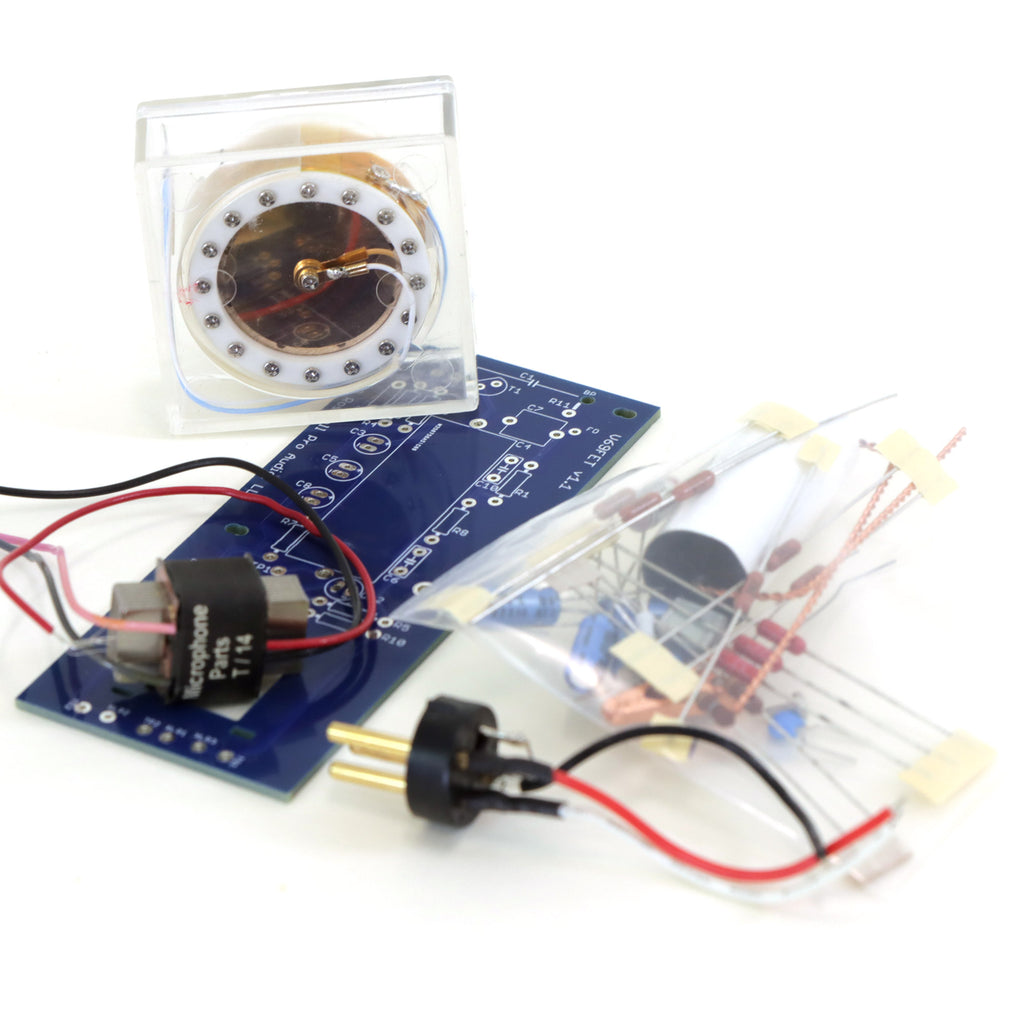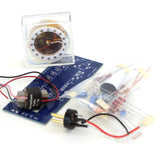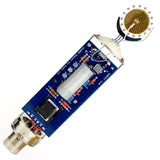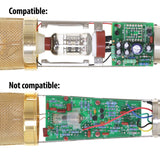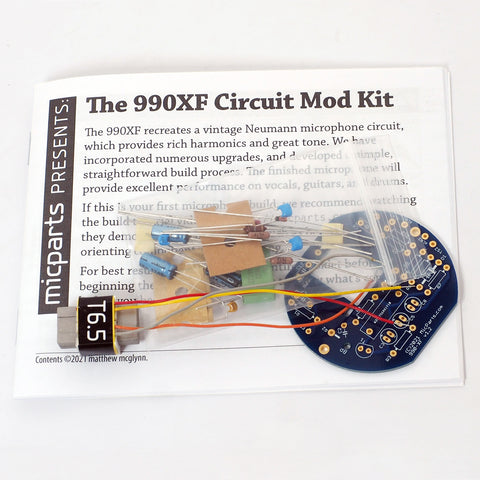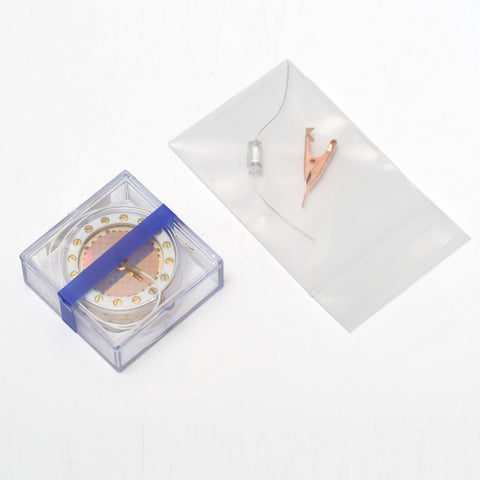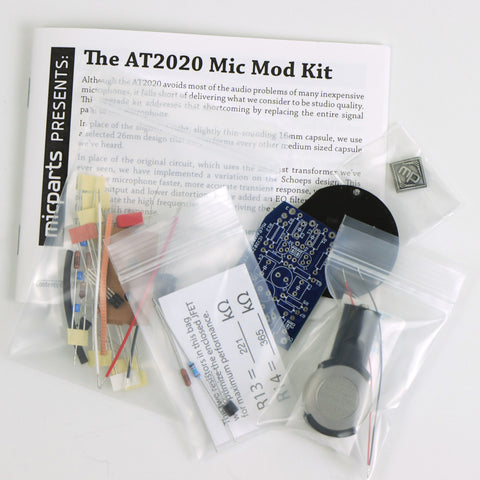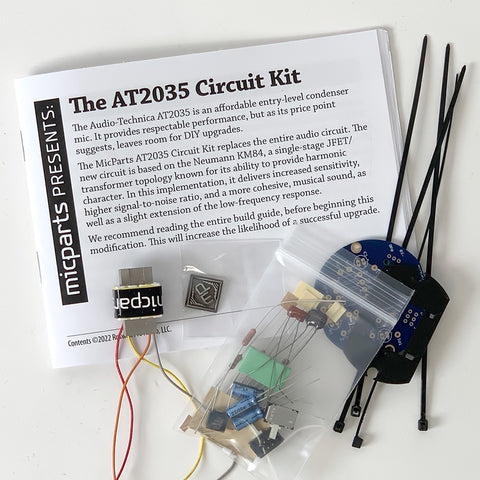V69 FET Microphone Upgrade Kit
$ 279.00 $ 349.00
The V69 FET kit replaces the entire signal path of the MXL V69 ME. It includes a custom implementation of our transformer-coupled FET circuit and our proprietary large-diaphragm capsule (not sold separately, not available anywhere else).
"Beta" edition: minimal documentation only
Unlike all other MicParts DIY circuit and microphone kits, this kit is includes minimal documentation: a list of component locations, and a few photos of the finished board. This is not an appropriate project for first-time mic builders.
If you want this upgrade, but are not confident of your ability to build the kit, contact us; we can upgrade your V69 for you.
What's In The Box
- Custom PCB
- 100% of components needed to build the circuit (including specially biased NOS JFET)
- Premium, custom-wound transformer
- Custom made capsule with proprietary tuning
- component placement documentation (but not a step-by-step guide)
Required Tools & Procedures
See a list of recommended and required tools.
Fitting the V69 grille over the new capsule requires shaving a slightly larger opening in the neck of the grille, with a Dremel tool or metal file.
Compatibility
The PCB was designed to fit the V-69 ME with the large 12AX7/12AT7 tube mounted just below the grille. This kit probably will not fit the V-69 ME that has a PCB-mounted sub-miniature tube (5840 / 6205 size).
We do not know whether it fits the V69 XM; we have never seen the interior layout of that model.
To determine fit/compatibility with your mic, print this PDF template at 100% scale, cut out the paper PCB shape, and hold it up to your mic's chassis to confirm that (a) it fits in your mic and (b) the mounting holes in the PCB match the ones in your chassis.
About the Circuit
We've used a variation on the best-selling T-84 circuit here, with changes that maximize the sound quality of the result.
The primary audio output capacitor here has been borrowed from our Platinum Edition V-251 microphone. All filter capacitors have been upgraded. We've configured a NOS JFET to run at higher voltage, which increases JFET headroom and creates additional transformer coloration. We're using a higher-ratio transformer in this design, as that allows us to drive it harder without clipping your preamp.
Tube Sound, But No Tube
Why do people love the sound of tube mics? The desirable sonic characteristics are mostly a combination of even-order harmonics and transient compression. Those effects are so desirable that audio engineers are willing to tolerate a high noise floor, susceptibility to microphonics, and special handling requirements (e.g. fragility, long warm-up time, weight). These problems are common to vintage tube microphones.
The FET circuit used here has been configured to create even-order harmonics, and to do some transient compression, without generating a high noise floor, being susceptible to microphonics, or imposing special handling needs.
It is worth noting, too, is that the stock V69 ME circuit is not a traditional tube circuit anyway; it sends its audio signal through two transistor gain stages and zero transformers after the tube, so if your goal was to get that classic "warm" tube/transformer sound, the V69 ME isn't giving you that anyway.
About the Capsule
We have bundled a Cardioid-only version of the special capsule in the T-67 microphone kit. This capsule, although based on the K67 backplates, does not need high-frequency corrective EQ. This proprietary tuning allows the mic to have a very open top end, with a gradual roll-off above 12kHz... and yet NOT be hyped in the critical 8-10kHz range.
Pedantic Details
After installing the new circuit and capsule, you will no longer need the V-69 PSU; the mic will run from +48V Phantom power. Therefore if your V69's PSU is broken or lost, this circuit is a great way to restore functionality to an otherwise useless piece of gear.
The kit includes an XLR3 insert, to replace the XLR7 insert currently in the microphone.

